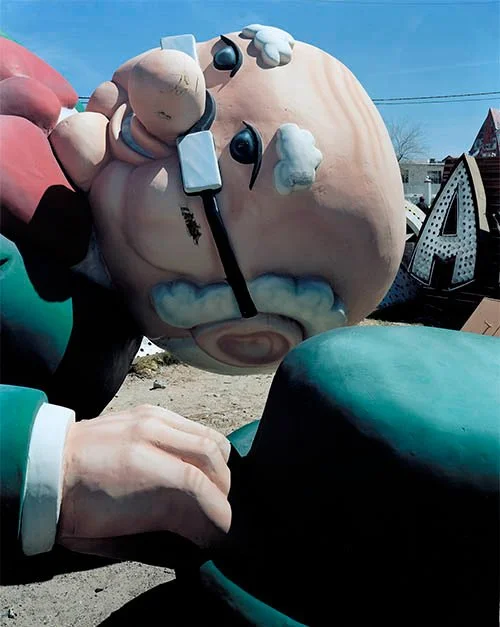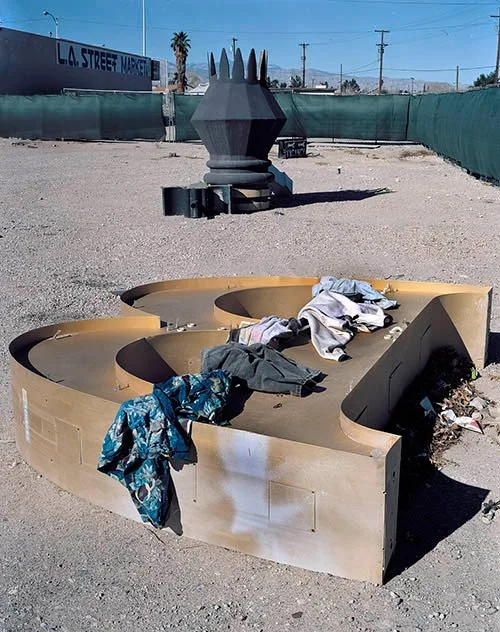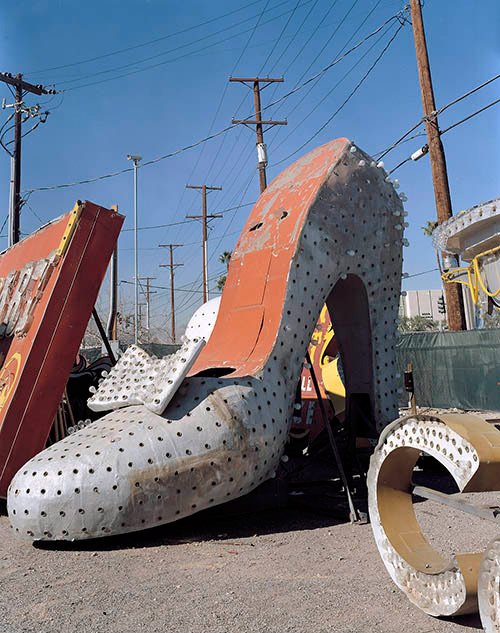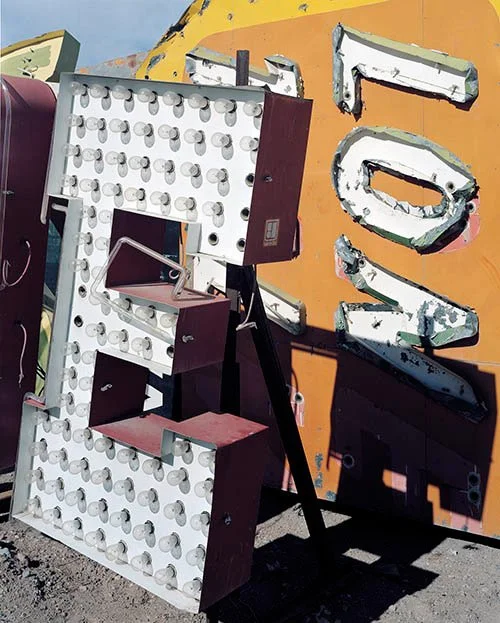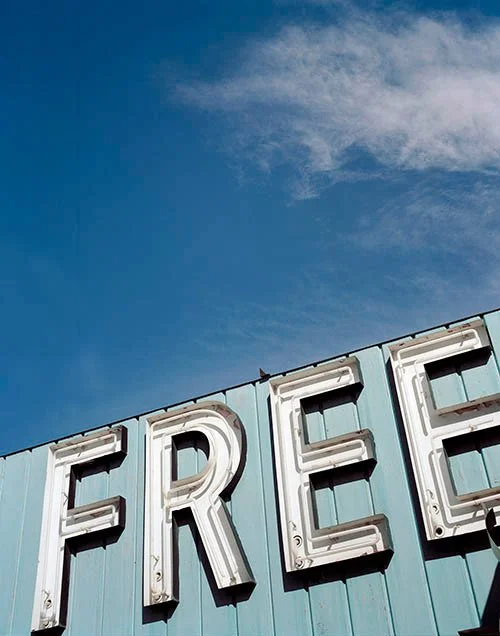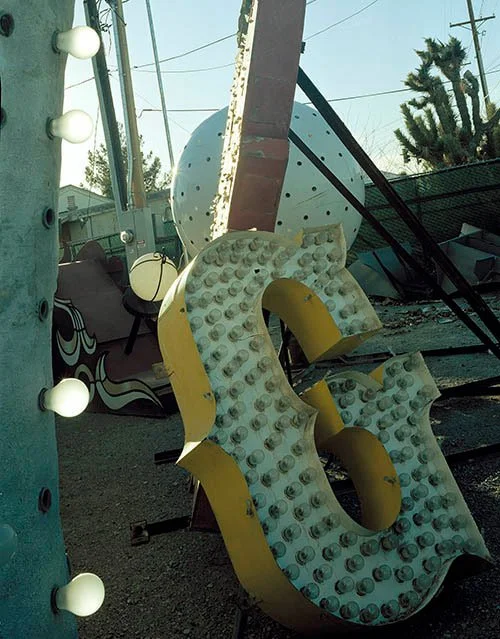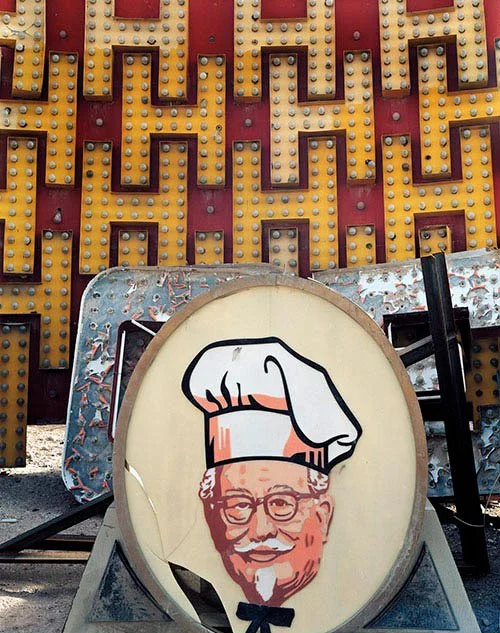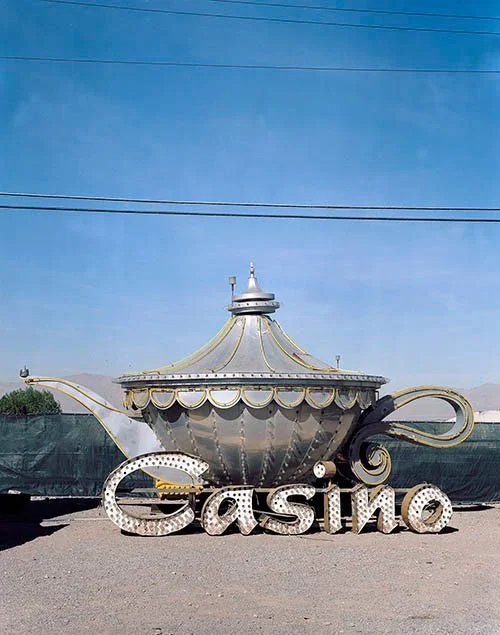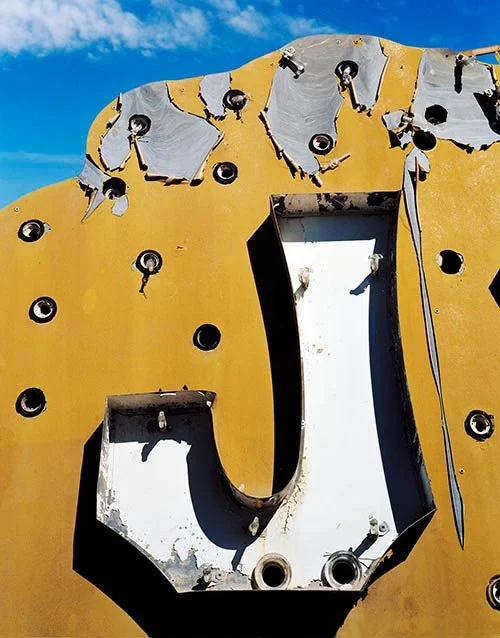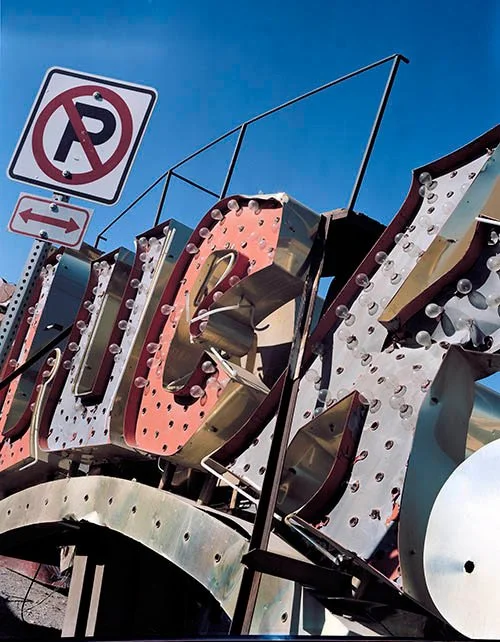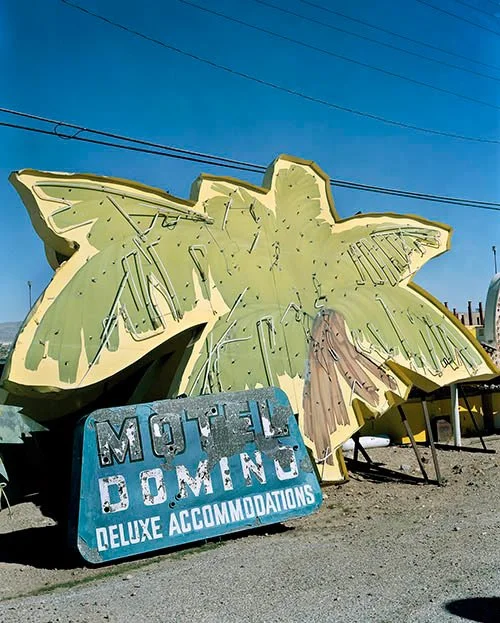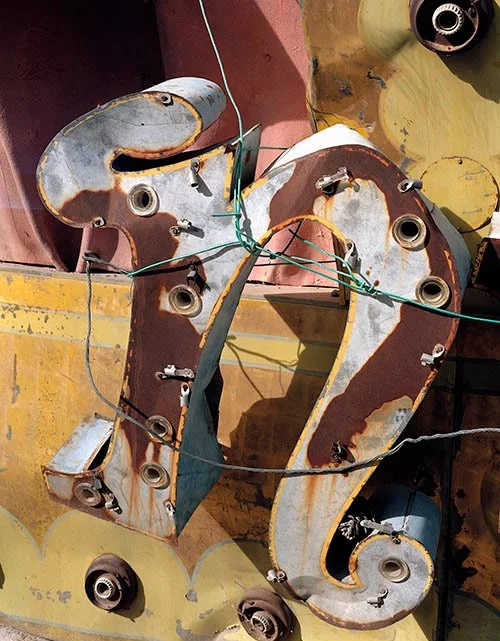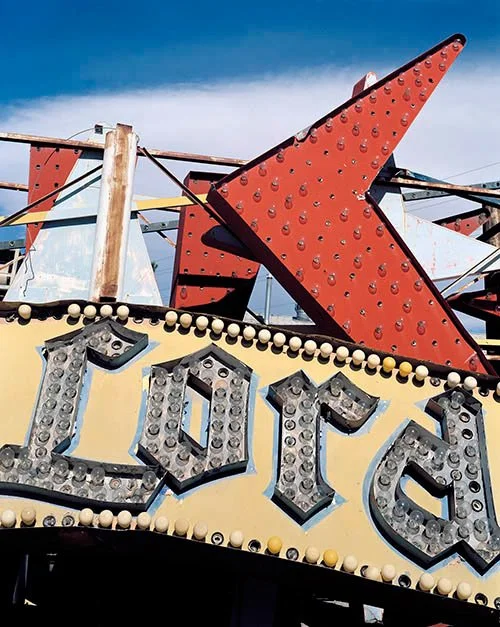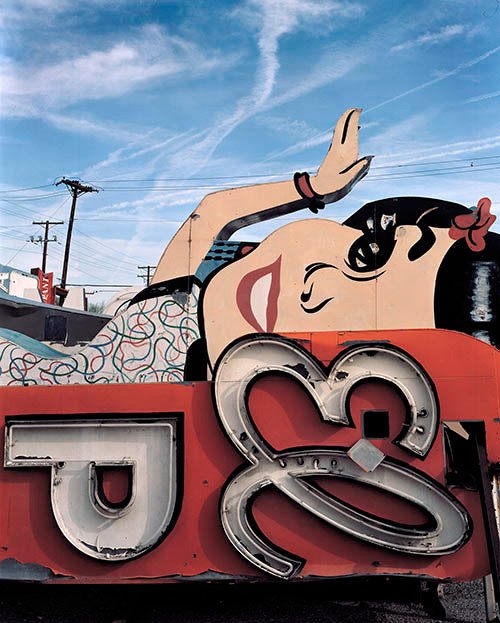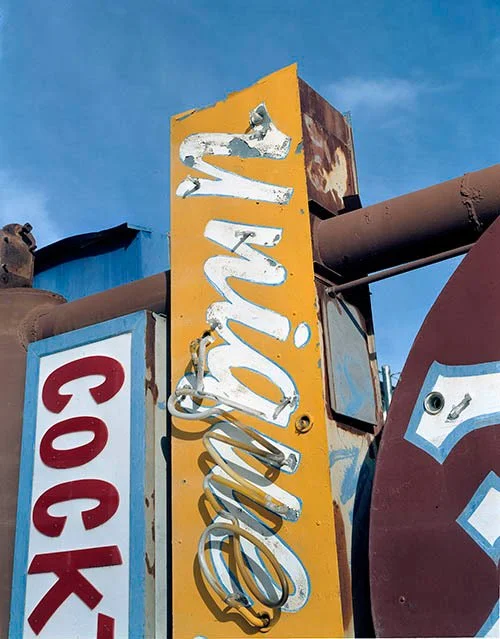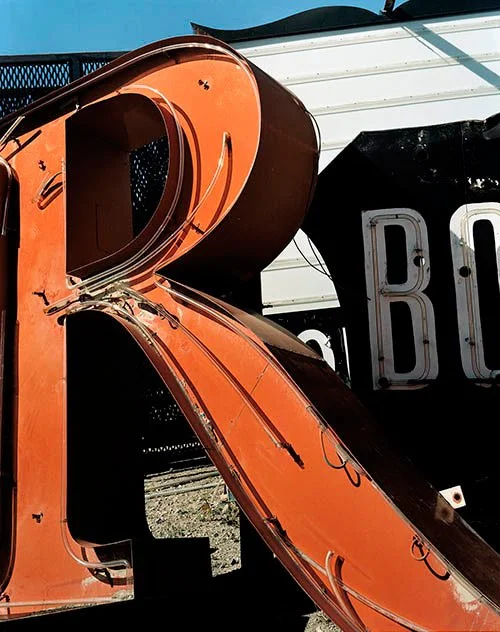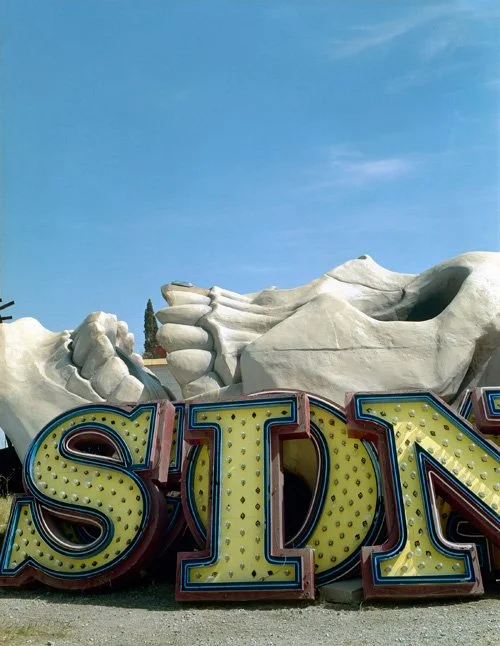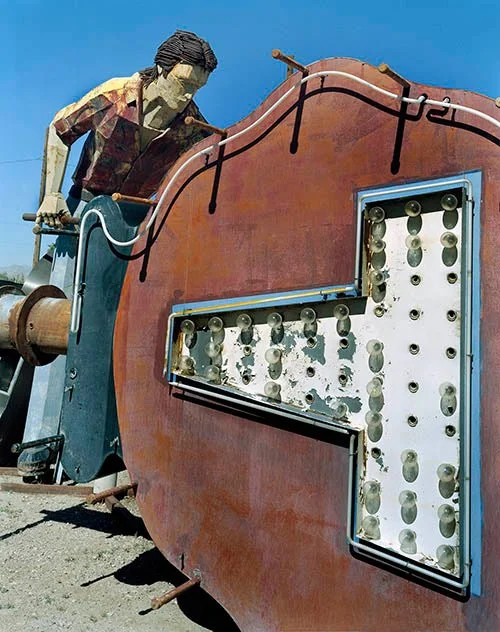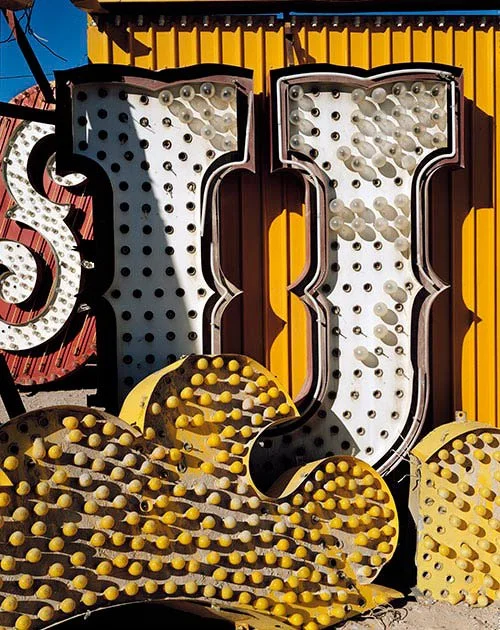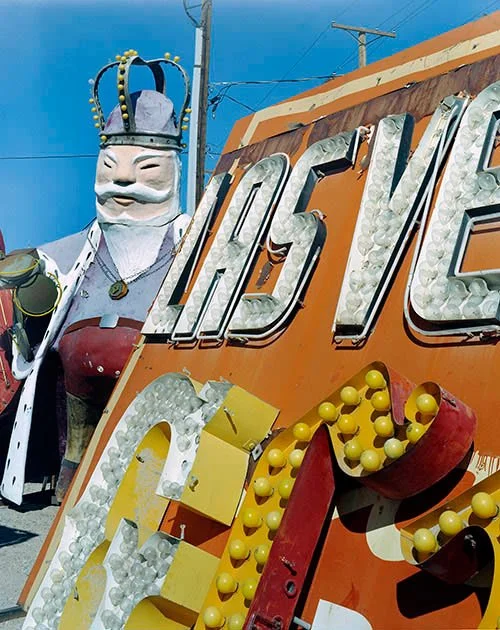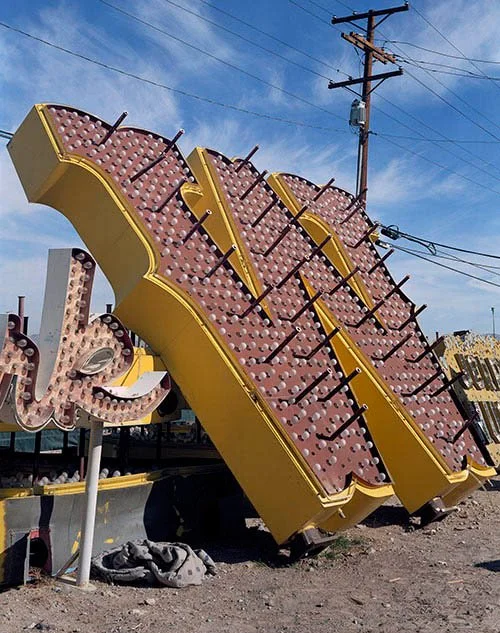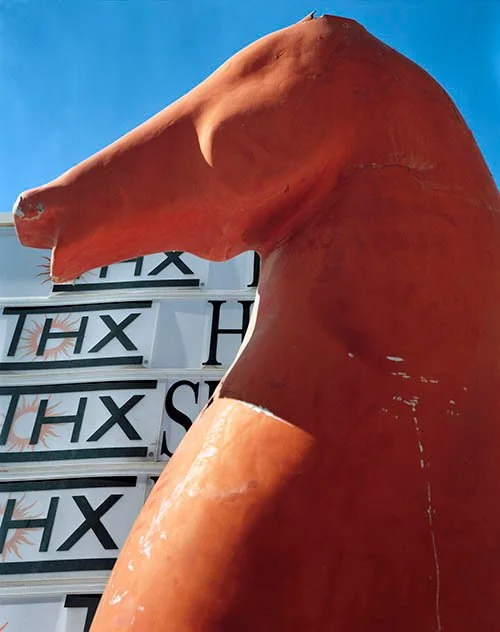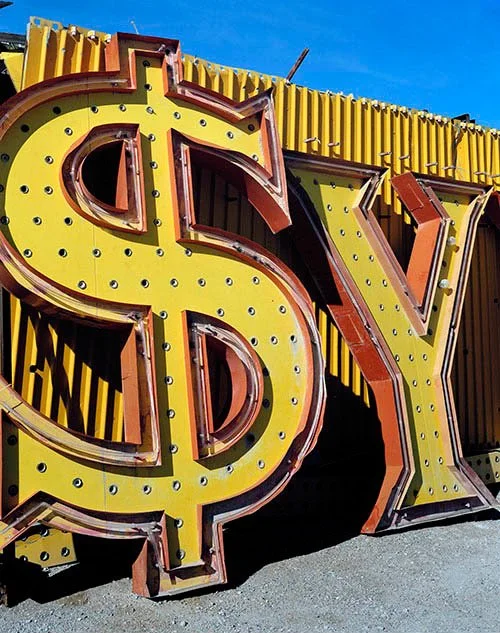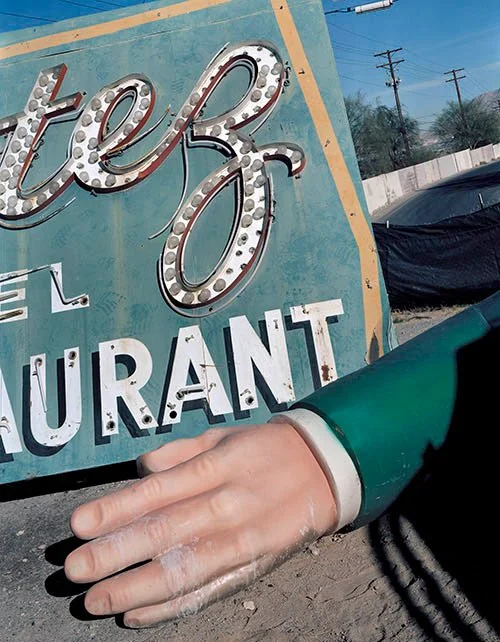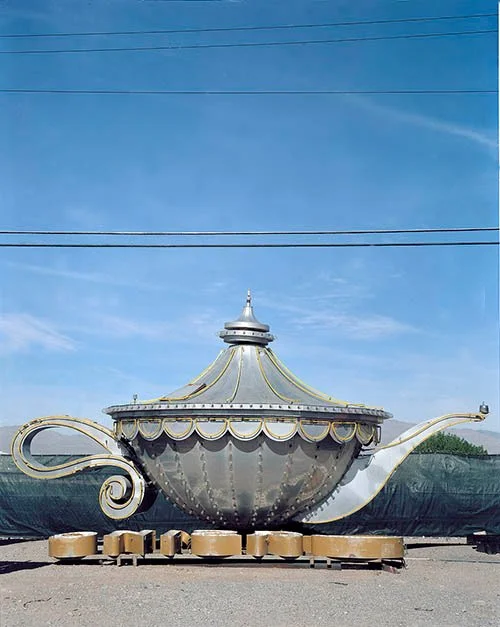Neon signs arguably put Las Vegas on the map. Considered the true art form of the city, they tell an elaborate story of the history of Las Vegas, with the first neon sign appearing around 1929. Sign development exploded in the 1930s, grabbing not only the attention of the drivers speeding through the Mojave but the entire country. America in general, and Las Vegas in particular, continues it’s love affair with neon to this day.
And where do these signs go when they age, when they grow old and tired, and technology has passed them by? Neon Boneyard Las Vegas A-Z is a collection of unrestored historic casino signs housed on a three- acre site under the auspices of the Neon Museum. Established in 1996, the core collection of signs originated at the Young Electric Sign Company (YESCO), and other sign companies have contributed to the collection since then.
In my eyes, Neon Boneyard Las Vegas A-Z is a living, organic, archaeological site that weaves together Las Vegas’ past and present in unexpected ways. The Boneyard not only perfectly depicts the surrealism of place that is Las Vegas, but also the strata of the countless communities that comprise it. And like any graveyard, the Boneyard is a quiet and peaceful santuary amid the frenzied chaos of The Strip. Birds nesting in the signs, flutter overhead, chirping and flying in and out of the photographic frame. It is a fitting place for one to pay their respects as the signs settle into anonymity.
